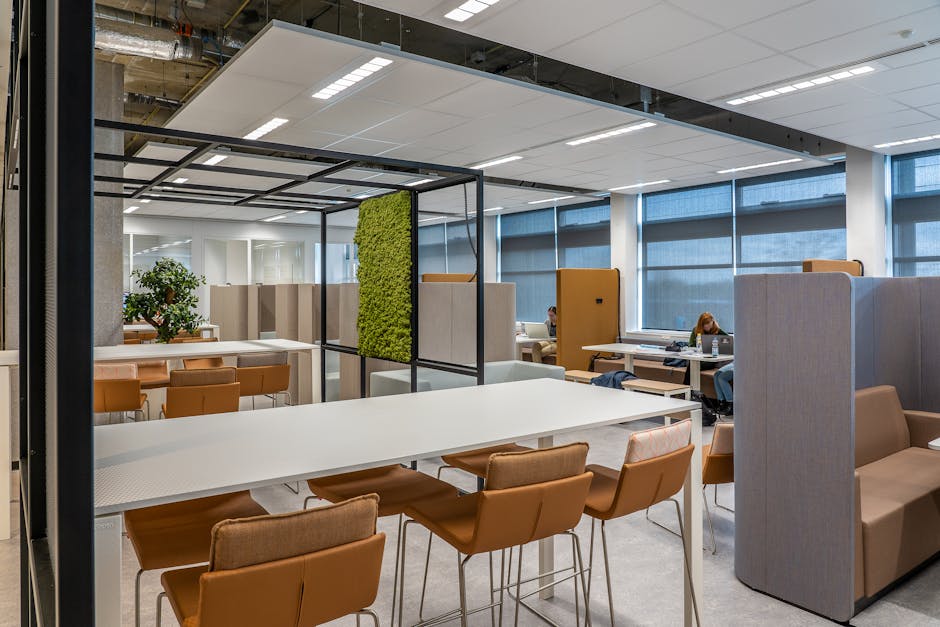Embracing Agility: The Future of Work Environments
“Explore the concept of agile work environments and their impact on modern businesses. Learn about key characteristics, benefits, and implementation strategies for creating flexible, collaborative workspaces that drive innovation and productivity. ”

In today's rapidly evolving business landscape, organizations are increasingly recognizing the need for adaptable and responsive work environments. The concept of an agile work environment has emerged as a powerful solution to meet the changing demands of the modern workforce. This article delves into the essence of agile workspaces, their benefits, and how companies can successfully implement and sustain them.
What is an Agile Work Environment?
An agile work environment is a flexible and dynamic workspace designed to accommodate the diverse needs of employees while promoting collaboration, innovation, and productivity. Unlike traditional office setups with fixed desks and rigid hierarchies, agile workspaces emphasize adaptability and freedom of movement.

Key characteristics of an agile work environment include:
- Flexibility: Employees have the freedom to choose where and how they work based on their tasks and preferences.
- Collaboration spaces: Open areas and meeting rooms designed to facilitate teamwork and idea-sharing.
- Technology integration: Seamless connectivity and digital tools that support remote work and virtual collaboration.
- Activity-based working: Different zones catering to various work styles and tasks, such as quiet areas for focused work and social spaces for informal interactions.
Benefits of Agile Work Environments
Implementing an agile work environment can yield numerous advantages for both employees and organizations:
-
Increased productivity: By allowing employees to choose their optimal work settings, agile environments can boost overall productivity and efficiency.
-
Enhanced collaboration: Open spaces and flexible seating arrangements encourage spontaneous interactions and cross-functional teamwork.
-
Improved employee satisfaction: The freedom to choose how and where to work can lead to higher job satisfaction and better work-life balance.
-
Cost savings: Optimized space utilization can result in reduced real estate costs and overhead expenses.
-
Attracting talent: Modern, flexible workspaces can be a powerful tool for attracting and retaining top talent, especially among younger generations.

Implementing an Agile Work Environment
Creating an effective agile work environment requires careful planning and execution. Here are some key steps to consider:
-
Assess your organization's needs: Conduct surveys and gather feedback from employees to understand their work preferences and requirements.
-
Design flexible spaces: Create a variety of work areas to accommodate different tasks and work styles, including quiet zones, collaborative spaces, and social areas.
-
Invest in technology: Implement robust IT infrastructure and digital tools to support seamless communication and collaboration, both in-office and remotely.
-
Develop clear policies: Establish guidelines for space usage, remote work, and communication to ensure smooth operations in the new environment.
-
Provide training and support: Offer workshops and resources to help employees adapt to the new work environment and make the most of its features.
Overcoming Challenges in Agile Work Environments
While agile work environments offer numerous benefits, they can also present some challenges. Here are some common issues and strategies to address them:
-
Noise and distractions: Implement noise-canceling technologies and create designated quiet zones for focused work.
-
Privacy concerns: Provide private spaces or booths for confidential conversations and sensitive tasks.
-
Resistance to change: Communicate the benefits of the new environment clearly and involve employees in the transition process.
-
Technology issues: Invest in reliable IT support and provide comprehensive training on new tools and systems.

Best Practices for Sustaining an Agile Work Environment
To ensure the long-term success of your agile work environment, consider the following best practices:
-
Regular feedback and adjustments: Continuously gather input from employees and make necessary adjustments to optimize the workspace.
-
Promote a culture of trust: Emphasize results and outcomes rather than time spent at a desk to foster a culture of trust and autonomy.
-
Lead by example: Encourage leadership to embrace the agile work environment and demonstrate its benefits.
-
Provide ongoing support: Offer regular training sessions and resources to help employees maximize the benefits of the agile workspace.
-
Monitor and measure success: Track key performance indicators such as productivity, employee satisfaction, and space utilization to gauge the effectiveness of the new environment.
The Future of Agile Work Environments
As technology continues to evolve and workforce expectations shift, agile work environments are likely to become increasingly prevalent. Future trends may include:
-
Enhanced virtual reality integration: Improved VR technology could create more immersive remote collaboration experiences.
-
AI-powered space optimization: Artificial intelligence could help organizations dynamically adjust workspace configurations based on real-time usage data.
-
Biophilic design: Incorporating natural elements into the workspace to promote well-being and productivity.
-
Personalized work experiences: Advanced technology could allow for more tailored work environments that adapt to individual preferences and needs.
In conclusion, agile work environments represent a significant shift in how we approach workplace design and management. By embracing flexibility, collaboration, and employee-centric design, organizations can create spaces that not only boost productivity but also enhance employee satisfaction and well-being. As we move forward, the ability to adapt and evolve our work environments will become increasingly crucial in staying competitive and attracting top talent in the ever-changing business landscape.